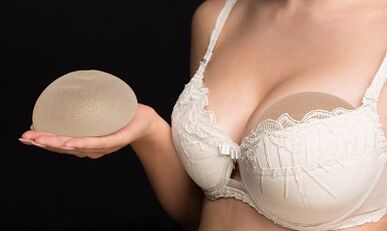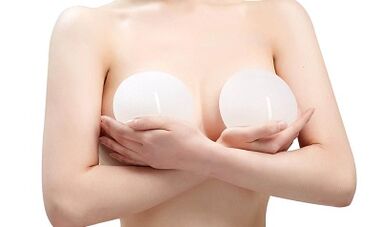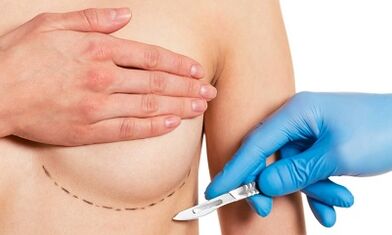
The aesthetic result of plastic breast augmentation depends on many factors.Of great importance is the choice of implantation pockets and the method of installing implant.The aesthetics of the bust after mammoplastics is affected by the individual initial data of the patient, including the shape of the chest and mammary glands, the condition of the skin, the thickness of the subcutaneous fat layer.These and other anatomical features are taken into account when choosing a profile, base width, size and shape of the endoprosthesis.An important criterion for a successful operation is to achieve a stable result that will delight a woman for many years.
The publication discusses the main ways of breast augmentation - types of surgical access, types of anatomical pockets for installing implants, advantages and disadvantages of various methods of mammoplasty.You will learn about how to recover properly after the operation, what is possible and what cannot be done during the rehabilitation period.
Indications for breast enlargement with implants
The operation to enlarge breast with implants is carried out according to aesthetic indications.The main indication for augmentation mammoplasty is the patient's desire to improve the aesthetics of the breast by increasing its size and modeling the shape.During the operation, deficiencies due to deformation of the nipple-arelar complex (stretching of the areola, change in the form) and omission of the glands after feeding the baby or due to age-related changes can also be eliminated.
The reason for the appeal to the plastic surgeon may be the following problems:
- Deterioration of the aesthetics of the thoracic glands after pregnancy and breastfeeding.
- Changing the shape of the bust as a result of involutional (aging) processes.
- Congenital hypoplasia of the mammary glands or amastia.
- Asymmetry, both innate and acquired nature.
- Tubular breasts.
- Mastoptosis with signs of hypotrophy of the mammary glands.
- Woman dissatisfaction with the shape or size of a bust.
Breast enlargement with implants is also carried out by patients who underwent radical operations on the mammary glands as part of the treatment of malignant neoplasms.Reconstructive augmentation mammoplasty allows you to recreate natural and aesthetically attractive breasts without increasing the risk of developing tumor processes.
What individual characteristics are taken into account before the operation?

Tactics of surgical correction are determined by the individual characteristics of the patient.Yes, there is always the opportunity to put an implant of large size, but far from always such a step will lead to the desired result - a natural and harmonious change in appearance.
The following factors are influenced by the choice of the form, profile and size of the endoprosthesis, as well as the choice of implantation pockets and the method of installing the implant
- The age of the woman.
- The initial shape and size of the mammary glands.
- The height and width of the chest.
- The severity of subcutaneous fat.
- The elasticity of the integumentary tissues of the mammary glands.
- The width of the interrogate interval.
- The presence of signs of ptosis (prolapse) of the bust.
The tactics of augmentation mammoplasty also affects whether a woman plans to give birth in the future to give birth and breastfeed.When choosing access, the necessity in the plastic of the nipple-aroolar complex is also taken into account, which may be required to achieve the optimal aesthetic result.
Methods for installing implants
Taking into account the above individual characteristics of anatomy and other factors, a plastic surgeon chooses one of three ways (types of surgical access) of the breast augmentation:
- Areolar (breast enlargement "through areola").
- Submammaric.
- Axillary.
Below are the features, pros and cons of each method of augmentation mammoplasty in detail.
Areolar access
With an areolar, or periareolar, access, the plastic surgeon sets the implants through the incision, which passes along the periphery of the pigmented zone of the areola.The main advantage of such surgical access is the invisibility of scars.The scar is located on the border of light and dark skin, and therefore it is quite difficult to notice it.
In the periarelar method of increasing the chest glands, there are other advantages, in addition to the minimum severity of the postoperative scar:
- During the operation, it is possible to carry out plasticism of the nipple-arelar complex.In some cases, it is difficult to achieve the optimal aesthetics of a bust without correcting the size and shape of the SAK, and this advantage of periarelar access can play a decisive role.
- Periareyular access eliminates the risk of damage to afferent (sensitive) nerve fibers, which pass to the SAK in the area of the loading fold.Due to this advantage, the area of mammoplasty allows you to completely maintain the sensitivity of the nipple and areola.
- Simultaneously with the increase in the bust, you can correct the initial stage of mastoptosis.
Despite the advantages of periarelar access listed above, the technique cannot be recommended to all women.In particular, this method of installing implants is not recommended for girls who plan to give birth to children and breastfeed them.This is explained by the fact that during the operation there is a risk of damage to the milk ducts, which will affect the lactation function.
Periareyolar access does not allow a complete overview of all implant pockets, which imposes restrictions on the size of the implant.This method is well suited to those patients who want to put a small endoprosthesis and slightly increase the chest.In a situation where a woman wants to add 2-3 sizes to breast glands, it is preferable to use submammamal or axillary access.
Submammarous access

With submammar access, the installation of endoprostheses is carried out through horizontal incisions, which pass under the chest gland in a natural skin fold.Postoperative scars when using this method of installing implants are significantly expressed, but they are hidden in the fold of the skin.The scars are visible in the position of lying down, and in the standing position, they are covered by the lower pole of the chest gland.
The main advantage of submammarous access is a very good overview of the operating field.For a plastic surgeon, this is the easiest type of mammoplasty, since there is a complete access to all implant pockets and it is easy to achieve absolutely symmetrical placement of implants.Thanks to this feature, large endoprostheses can be installed.
Another advantage of the submammary methodology for increasing the bust is the lack of risk of damage to the milk ducts.After the operation, the lactation function is preserved, which allows you to recommend this method for patients who plan in the future pregnancy and breastfeeding of the baby.
The submammamant method of installing implants is not devoid of shortcomings.For many patients of plastic surgeons, the main minus of the methodology in a pronounced and sufficiently extended scar, which passes in a fold under the chest.The disadvantage is the risk of damage to the afferent nerves innervating the SAK.If during the operation the nerve is dissected, the sensitivity of the nipple and areola will be disturbed.
The use of submammary access does not allow simultaneously with augmentation mammoplasty to perform the plastic surgery through one incision.In addition, women who have the initial signs of a bust (mastoptosis) often turn for the help of a plastic surgeon.If periareyular access allows you to eliminate age -related manifestations, then when using submammar access, it is impossible to correct mastoptosis simultaneously with the chest enlargement.
Axillar access
With axillary access, breast augmentation is carried out through the cuts, which are in the axillary fossa.The key advantage of the methodology is that the scars pass away from the mammary glands and do not affect their aesthetic perception.On the other hand, scars are noticeable, and this can become a problem if a woman wears open clothes.For example, scars can be clearly visible during sports, especially in a body position with their hands raised up.
Nevertheless, it is axillar access that is considered the “gold standard” in augmentation mammoplasty.The operation is carried out under the control of fiber -optic equipment (endoscope), which allows a plastic surgeon to access all implant pockets.There is no risk of damage to the nerve trunks.There is no risk of dissection of the milk ducts, which allows us to recommend this method of installing implants to girls planning pregnancy.There are no restrictions in terms of endoprosthesis - the axillar type of access allows you to put implants of any volume, shape and profile.
The disadvantages of the axillar method of breast augmentation are that the plastic surgeon has no way to correct the consequences of omission of the mammary glands or to perform plastic of the nipple-animular complex.For this reason, axillary access is used mainly to model the size of the bust, when there are no concomitant aesthetic problems requiring surgical correction.
Surgical access selection criteria
In clinical practice, plastic surgeons use several criteria for choosing surgical access to increase the chest glands.One of the main criteria is the age of the woman and her further plans regarding pregnancy.If the patient plans to give birth to children, it is advisable to refuse periarelar access.A axillar access or submammarous access is preferable.
If a woman does not plan to give birth, you can use any of the previously considered types of surgical access.In situations where, in order to improve the aesthetics of the bust, simultaneously with its increase, it is necessary to perform the plastic of the areola, periareyolar access is preferable.The same method of installing implants is better suited to patients with the initial signs of mastoptosis.
Patients who want to increase the bust by several sizes, a plastic surgeon can recommend a submammamor or axillar method.The optimal choice in this situation is an increase in the chest glands through the axillary fossa, however, the aesthetic wishes of the woman are also taken into account.If she expresses a desire to hide the scar in a natural fold under the chest, submammary access is selected.
Choosing a pocket for installing implant

The next aspect of increasing mammoplasty is associated with the choice of anatomical region in which implants will be installed.
The implantation pocket can be located:
- under the mammary gland (subgandular placement);
- under the pectoral muscle (submiscular location);
- Partially under the gland, partially under the muscle (combined version).
Subgandular placement.The implant is installed in the anatomical space under the gland.The most superficial pocket is separated from the surface of the body only with cover tissues and mammary glands, and due to this feature it is not recommended to be used if it is necessary to increase the chest by several sizes.A large endoprosthesis can be determined visually.In addition, the risk of developing step deformation - aesthetic complication increases, in which a kind of “step” is formed above the upper edge of the implant.
With the subgandular placement of the endoprosthesis, the risk of developing other complications of aesthetic nature, in particular, the appearance of deformation of the integumentary tissues above the thoracic gland in the form of “waves” or “mountain ash”.With the development of capsular contracture, the deterioration of the aesthetics of the bust is also more pronounced with the superficial placement of the implant.
Another feature of this type of placement is that the endoprosthesis and mammary glands are supported only by cuper bonds - the structures of connective tissue, the elasticity of which decreases with age.For this reason, with a subgandular installation of implant, the risk of developing mastoptosis increases, especially in women with initially large breasts.
Submuscular placement.The placement of implant under a large chest muscle avoids the problems characteristic of a subgandular location.Less the risk of capsular contracture and the appearance of skin deformation above the chest in the form of “rowan” and “waves”.The endoprosthesis is securely fixed with muscles and does not increase the likelihood of developing mastoptosis.
But the placement of the implant under the muscle has the opposite side.
Firstly, in girls who are actively involved in sports, the risk of rotation or displacement of implant increases.If, to increase the chest glands, trendy implants were used, rotation (turn) can lead to breast deformation, which can only be corrected during a repeated operation.
Secondly, with submiscipular placement, the degree of injury of tissues during surgery increases.Because of this, the healing goes slower and the rehabilitation period is lengthened-to wear compression underwear and follow all the restrictions for a longer time.
Combined placement.The best option is combined placement, in which the upper endoprosthesis segment is under the muscle, and the lower pole is under the gland.With this arrangement, the risk of step deformation is excluded.Below the risk of turning and displacement of implant, the development of capsular contracture and other aesthetic complications.Healing is faster, the rehabilitation period is reduced.
Types of implants

Breast enlargement is carried out by implants from leading world manufacturers.Medical silicone endoprostheses with a high degree of cohesion and varying degrees of density were made.Silicon is covered with an elastomeric shell, which eliminates the likelihood of gel diffusion.The outer capsule is represented by a porous shell, the special texture of which contributes to the integration of implant into living fabrics and its reliable fixation.Due to the porous membrane, the risk of fibrous-capsule contracture is reduced.
The line of each manufacturer presents several hundred types of implants that differ in the following characteristics:
- Form: an implant can be anatomical (drop -shaped) or round.
- Base width: horizontal size of the lower pole of the endoprosthesis.
- Profile: Endoprosthesis height.
- Size: Volume.
The choice of implant is determined by the wishes, as well as the initial data of the patient - individual characteristics of the structure of the chest and mammary glands.For example, girls with a pronounced inter -thilet gap are better suited for low -profile anatomical implants with a wide base.Women who want to shift the accents to the neckline are more suitable for round full -profile implants, which visually increase the upper pole of the mammary gland.
Preparation for breast augmentation with implants
Preparation for plastic surgery to enlarged breast can be divided into two stages - diagnostic and aesthetic.The purpose of the aesthetic stage of preparation is to choose the perfect implant and decide on the tactics of surgical intervention.Based on the results of computer modeling and analysis of the initial data of the patient, the surgeon selects the method of installing the endoprosthesis and an anatomical pocket for its placement.
The purpose of the diagnostic stage is to minimize operating and anesthesiological risks, as well as eliminate contraindications for surgery.Each woman, before increasing the mammary glands, undergoes a comprehensive diagnosis, including an expanded list of instrumental and laboratory methods.Mammography with a consultation of a gynecologist and mammologist is surely prescribed.
A few weeks before increasing mammoplasty, a woman should stop taking certain drugs, in particular, contraceptive hormonal drugs and anticoagulants.It is necessary to abandon anti -inflammatory and analgesic drugs from the NSAID group, since they slow down blood coagulation.It is also necessary to stop taking alcohol and abandon smoking, since ethanol and nicotine slow down regenerative processes and negatively affect the pace of recovery after mammoplasty.
Rehabilitation after mammoplasty

The early postoperative period is accompanied by typical symptoms for any operation - swelling, pain and hematomas in the area of the operating wound, fever, general malaise.These symptoms are a normal reaction of the body in response to a violation of tissue integrity.The preparations prescribed by a plastic surgeon - anti -inflammatory, anti -explocational, painkillers will help to cope with the difficulties of this period.For the prevention of infectious complications, the doctor prescribes a short course of antibiotics.
The specifics of the rehabilitation period after mammoplasty is that it is necessary to constantly wear a compression bra.Elastic linen is sewn on an individual order even before surgery.You need to wear it continuously, you can only remove it for a while of hygiene procedures.As for body hygiene, in the first 7-10 days after the increase in the chest glands, it should be limited by wet wipes, you cannot take a shower.
You can sleep after the operation only on your back.From 10-14 days, it is allowed to sleep on the side, but it is still impossible to turn on the stomach.You can not play dancing or sports.The ban on physical activity, including household, is valid for 4 weeks;Power loads and some types of cardio training are contraindicated for 3 months (or until the special resolution of a plastic surgeon).
Throughout the restoration period, you can not sunbathe in either direct sunlight or in the solarium.You can not go to a sauna or bath, take hot baths at home.Alcohol and smoking are contraindicated.Compression linen is allowed to be removed from the second month, but during the year you need to wear a bra with wide straps and a wide belt that supports the chest well.


























